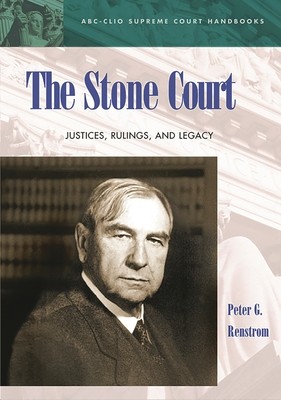
- We will send in 10–14 business days.
- Author: Peter G Renstrom
- Publisher: ABC-CLIO
- ISBN-10: 1576071537
- ISBN-13: 9781576071533
- Format: 18.6 x 26.1 x 2.4 cm, hardcover
- Language: English
- SAVE -10% with code: EXTRA
Reviews
Description
When President Franklin Roosevelt got the chance to appoint seven Supreme Court justices within five years, he created a bench packed with liberals and elevated justice Harlan Fiske Stone to lead them. Roosevelt Democrats expected great things from the Stone Court. But for the most part, they were disappointed.
The Stone Court significantly expanded executive authority. It also supported the rights of racial minorities, laying the foundation for subsequent rulings on desegregation and discrimination. But whatever gains it made in advancing individual rights were overshadowed by its decisions regarding the evacuation of Japanese Americans. Although the Stone Court itself did not profoundly affect individual rights jurisprudence, it became the bridge between the pre-1937 constitutional interpretation and the "new constitutionalism" that came after.
EXTRA 10 % discount with code: EXTRA
The promotion ends in 19d.18:12:16
The discount code is valid when purchasing from 10 €. Discounts do not stack.
- Author: Peter G Renstrom
- Publisher: ABC-CLIO
- ISBN-10: 1576071537
- ISBN-13: 9781576071533
- Format: 18.6 x 26.1 x 2.4 cm, hardcover
- Language: English English
When President Franklin Roosevelt got the chance to appoint seven Supreme Court justices within five years, he created a bench packed with liberals and elevated justice Harlan Fiske Stone to lead them. Roosevelt Democrats expected great things from the Stone Court. But for the most part, they were disappointed.
The Stone Court significantly expanded executive authority. It also supported the rights of racial minorities, laying the foundation for subsequent rulings on desegregation and discrimination. But whatever gains it made in advancing individual rights were overshadowed by its decisions regarding the evacuation of Japanese Americans. Although the Stone Court itself did not profoundly affect individual rights jurisprudence, it became the bridge between the pre-1937 constitutional interpretation and the "new constitutionalism" that came after.


Reviews